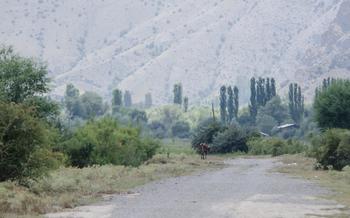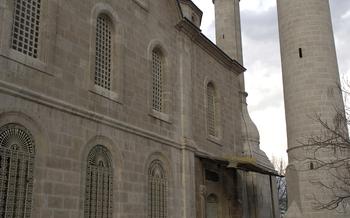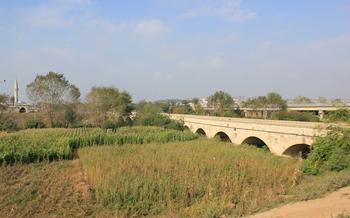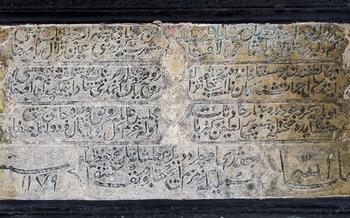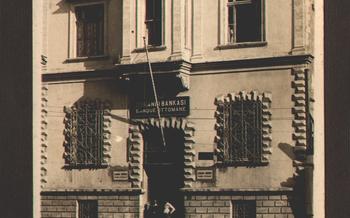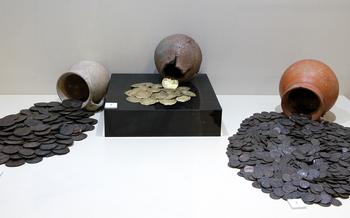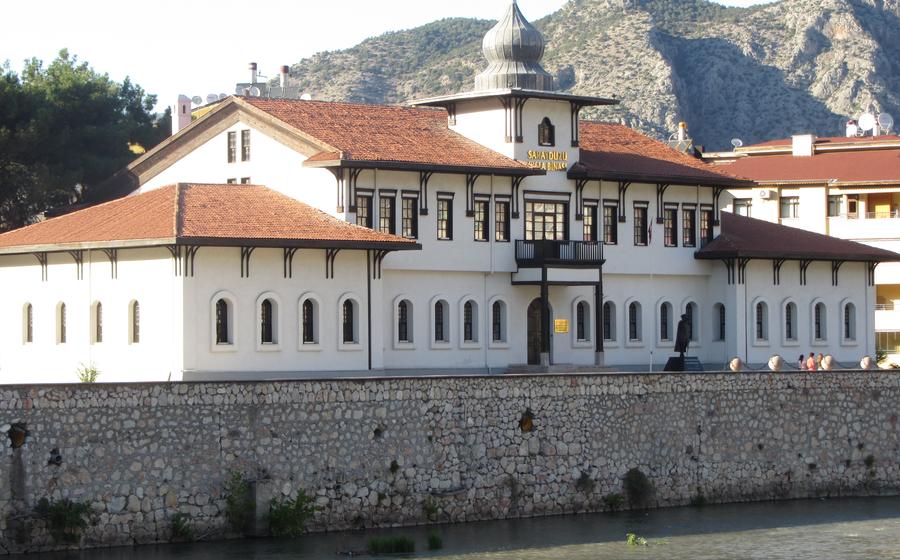
Amasya Yörgüç Paşa Mosque and Tomb
- A Historical Masterpiece
- A Journey Through Time: The History of the Mosque
- Architectural Splendor: Exploring the Mosque's Design
- A Haven of Spirituality: The Tomb of Yörgüç Paşa
- Unveiling the Mosque's Interior: A Realm of Beauty
- A Place of Worship and Serenity
- Amasya's Cultural Heritage: The Mosque's Contribution
- The Legacy of Yörgüç Paşa: A Revered Figure
- A Must-Visit for History and Architecture Enthusiasts
- A Perfect Addition to Your Amasya Itinerary
- Practical Information for Visitors
- Capturing the Essence of the Mosque: Photography Tips
A Historical Masterpiece
The Amasya Yörgüç Paşa Mosque and Tomb stand as a testament to the rich history and cultural heritage of Turkey. Built in the 15th century by Yörgüç Paşa, a prominent figure in the Ottoman Empire, the mosque is a stunning fusion of Seljuk and Ottoman architectural styles. Its unique features, including an intricately carved minaret and a beautifully adorned tomb, make it a must-visit attraction for anyone interested in history, architecture, and spirituality.
The mosque's historical significance extends beyond its architectural value. It played a pivotal role in the transformation of Amasya from a Byzantine stronghold to a thriving Ottoman city. As the city grew in prominence, the mosque became a symbol of Ottoman power and influence, solidifying its place as a central landmark of Amasya's Islamic heritage.
A Journey Through Time: The History of the Mosque
The Amasya Yörgüç Paşa Mosque and Tomb stand as enduring testaments to the city's rich past and architectural heritage. The mosque's construction, commissioned by the illustrious Yörgüç Paşa, played a pivotal role in transforming Amasya into a prominent cultural and religious center during the 15th century.
The mosque's history is intertwined with the life of Yörgüç Paşa, a revered figure who held significant positions within the Ottoman Empire. As the governor of Amasya, he envisioned the mosque as a symbol of the city's growing importance and as a legacy to his own devotion.
The mosque's architectural style reflects the transition from the Seljuk to the Ottoman era, showcasing a harmonious blend of both traditions. Its distinctive features, such as the intricate tilework and the elegant calligraphy adorning the interior, speak to the artistry and craftsmanship of the period.
Over the centuries, the mosque has undergone several renovations and expansions, each reflecting the changing tastes and influences of the time. Despite these transformations, the mosque's original essence and historical significance have been meticulously preserved, making it a living testament to Amasya's enduring legacy.
Architectural Splendor: Exploring the Mosque's Design
The Amasya Yörgüç Paşa Mosque seamlessly blends Seljuk and Ottoman architectural styles, showcasing a harmonious fusion of two distinct eras. The exterior facade captivates with its intricate stonework, featuring elegant arches, decorative moldings, and stunning muqarnas ornamentation around the entrance. The minaret, a defining feature of Islamic architecture, rises gracefully from the mosque's corner, adorned with intricate tilework that adds a touch of color and majesty.
Stepping inside the mosque, visitors are greeted by a spacious and serene prayer hall. The interior is a testament to the mosque's rich artistic heritage. The walls are adorned with vibrant tiles, each tile meticulously arranged to create mesmerizing geometric patterns. Verses from the Quran, inscribed in elegant calligraphy, add a touch of spirituality to the atmosphere. The central dome, a hallmark of Ottoman architecture, dominates the interior space, its grandeur enhanced by the intricate paintings and delicate moldings that adorn its surface.
The mosque's design is not merely decorative; it also serves a functional purpose. The carefully placed windows allow for ample natural light to flood the prayer hall, creating a bright and airy space that fosters a sense of tranquility and devotion. The acoustics of the mosque are also remarkable, ensuring that the voices of the imam and worshippers resonate clearly throughout the hall.
A Haven of Spirituality: The Tomb of Yörgüç Paşa
Within the confines of the Amasya Yörgüç Paşa Mosque lies a sacred space dedicated to the memory of its founder, Yörgüç Paşa. The tomb, an architectural masterpiece in its own right, serves as a testament to the deep reverence and respect held for this influential figure. Its presence within the mosque underscores the spiritual significance of the site, creating a profound atmosphere of devotion and remembrance.
The tomb's design mirrors the architectural style of the mosque, seamlessly blending Seljuk and Ottoman influences. Its intricate carvings, delicate tilework, and elegant calligraphy pay homage to the artistic traditions of the era. The tomb's placement within the mosque's main chamber ensures that visitors are immediately drawn to its sacred presence, inviting them to pause and reflect upon the life and legacy of Yörgüç Paşa.
Beyond its architectural beauty, the tomb serves as a poignant reminder of Yörgüç Paşa's enduring contributions to Amasya. As visitors stand before the tomb, they are transported back in time, contemplating the remarkable achievements of this visionary leader. The tomb becomes a symbol of devotion, not only to Yörgüç Paşa but also to the enduring spirit of Amasya and its rich Islamic heritage.
Unveiling the Mosque's Interior: A Realm of Beauty
The interior of the Yörgüç Paşa Mosque is a testament to the artistry and craftsmanship of its builders. The walls are adorned with intricate tilework, each tile meticulously hand-painted with vibrant colors and geometric patterns. The tiles tell stories from the Quran and depict scenes from Islamic history, creating a visual feast for the eyes. The ceiling is adorned with stunning stained-glass windows, which cast a kaleidoscope of colors onto the floor below. The windows depict scenes from nature, such as flowers and birds, and add a touch of serenity to the mosque's interior. The majestic dome, which dominates the interior space, is a marvel of engineering and design. Its intricate patterns and calligraphy create a sense of grandeur and awe, while the natural light that filters through its windows illuminates the mosque's interior with a soft, ethereal glow. The harmonious blend of colors and patterns in the mosque's interior creates a mesmerizing atmosphere that invites visitors to linger and contemplate the beauty of Islamic architecture.
A Place of Worship and Serenity
The Yörgüç Paşa Mosque, with its serene and spiritual ambiance, serves as a sanctuary for religious devotion and contemplation. As one steps inside, the tranquil atmosphere envelops the senses, inviting visitors to immerse themselves in the sacred space. The faithful gather here daily to offer prayers and perform rituals, their voices resonating harmoniously within the mosque's walls. The mosque's serene environment fosters a sense of community, where worshippers come together to strengthen their spiritual bonds and seek solace in their faith. The air is filled with a sense of reverence and tranquility, inspiring visitors to find inner peace and connect with their spirituality.
Amasya's Cultural Heritage: The Mosque's Contribution
Theya's rich cultural history, representing the harmonious blending of Islamic and Anatolian traditions. Built during the Ottoman period, the mosque reflects the city's position as a cultural crossroads, where East meets West. The mosque's unique architectural style, incorporating Seljuk and Ottoman influences, showcases the city's diverse heritage. It serves as a symbol of unity and diversity, reflecting Amasya's role as a melting pot of cultures throughout history. The mosque's intricate tilework, calligraphy, and stained-glass windows depict scenes from Islamic history and culture, offering visitors a glimpse into the city's rich artistic traditions. The mosque's enduring presence in the heart of Amasya highlights its significance as a cultural landmark and a symbol of the city's vibrant past.
The Legacy of Yörgüç Paşa: A Revered Figure
Yörgüç Paşa, the revered founder of the Amasya Yörgüç Paşa Mosque and Tomb, stands as a towering figure in the city's history and cultural heritage. His life and accomplishments have left an enduring impact on Amasya and the surrounding region.
Born in the late 14th century, Yörgüç Paşa rose through the ranks of the Ottoman military and administrative system, earning a reputation for his bravery, leadership, and diplomatic skills. He served as the governor of several provinces, including Amasya, where he left a lasting legacy.
Yörgüç Paşa's vision and philanthropy were instrumental in the development of Amasya. He commissioned the construction of the mosque and tomb that bears his name, a testament to his deep faith and commitment to the city's well-being. The mosque's grandeur and architectural beauty have made it a symbol of Amasya's rich cultural heritage.
Beyond his architectural contributions, Yörgüç Paşa played a pivotal role in promoting education and knowledge in Amasya. He established a madrasah, or Islamic school, where students could study religious sciences and other subjects. This institution became a center of learning and scholarship, attracting students from across the region.
Yörgüç Paşa's legacy extends beyond his own lifetime. His descendants continued to play a prominent role in Amasya's affairs, contributing to the city's prosperity and development. The Yörgüç Paşa family became known for their generosity and patronage of the arts, supporting various cultural and educational initiatives.
To this day, Yörgüç Paşa is remembered as a revered figure in Amasya. His name is synonymous with piety, leadership, and philanthropy. The mosque and tomb he built stand as a testament to his vision and enduring legacy, inspiring future generations to strive for excellence and contribute to their communities.
A Must-Visit for History and Architecture Enthusiasts
For those with a passion for history and architecture, the Amasya Yörgüç Paşa Mosque is an absolute must-visit. It presents a unique opportunity to explore a seamless blend of architectural styles, showcasing the harmonious coexistence of Seljuk and Ottoman influences. The mosque stands as a testament to the region's rich cultural heritage, offering visitors the chance to witness the grandeur and beauty of Islamic architecture firsthand.
Moreover, the mosque's historical significance adds to its allure, making it a must-see for those interested in understanding the evolution of architecture in Turkey. With its well-preserved features and intricate details, the mosque provides a glimpse into the past and serves as a reminder of the region's rich history. Whether you're an architecture buff, a history enthusiast, or simply someone who appreciates beautiful buildings, the Amasya Yörgüç Paşa Mosque is sure to leave a lasting impression.
A Perfect Addition to Your Amasya Itinerary
Ideally located in the heart of Amasya's old town, the Yörgüç Paşa Mosque is effortlessly accessible on foot. History buffs and architecture enthusiasts can seamlessly incorporate this remarkable structure into their walking tour, exploring the city's rich heritage at their own pace. The mosque's proximity to other notable attractions, such as the Amasya Museum and the historic Hazeranlar Mansion, allows visitors to immerse themselves in the city's diverse past. Amidst the vibrant energy of Amasya, the mosque offers a tranquil oasis, inviting travelers to pause, reflect, and appreciate its serene atmosphere. Whether you're a first-time visitor or a seasoned explorer, the Yörgüç Paşa Mosque promises an unforgettable experience, leaving an enduring impression of Amasya's architectural and historical grandeur.
Practical Information for Visitors
Before visiting the Amasya Yörgüç Paşa Mosque and Tomb, it's essential to be aware of some practical information to ensure a respectful and enjoyable experience. The mosque is generally open to visitors during daylight hours, except during prayer times. It's advisable to dress modestly and avoid revealing clothing, as is customary when visiting religious sites. Guided tours are available upon request, providing a deeper understanding of the mosque's history and significance. Additionally, audio guides in various languages can be rented for self-guided exploration. Facilities such as restrooms and prayer areas are available for the convenience of visitors.
Capturing the Essence of the Mosque: Photography Tips
Best Angles and Vantage Points: To capture the mosque's grandeur, position yourself in front of the main entrance, showcasing its towering minarets and intricate facade. For a unique perspective, climb to the nearby hills for a panoramic shot of the mosque nestled amidst the city's skyline.
Highlighting Architectural Details: Use a telephoto lens to zoom in on the intricate carvings, tilework, and calligraphy adorning the mosque's exterior and interior. Focus on the details of the domes, arches, and windows to reveal the mosque's architectural prowess.
Harnessing Natural Light: Visit the mosque during the golden hours of sunrise or sunset to capture the warm, diffused light illuminating the mosque's exterior. This soft light enhances the colors and textures of the mosque, creating a magical atmosphere.
Respecting the Sacred Space: Remember that the mosque is an active place of worship. Be respectful and mindful of the worshippers. Avoid using flash photography or disturbing ongoing prayers. Ask permission before photographing people, and always maintain a respectful demeanor.

